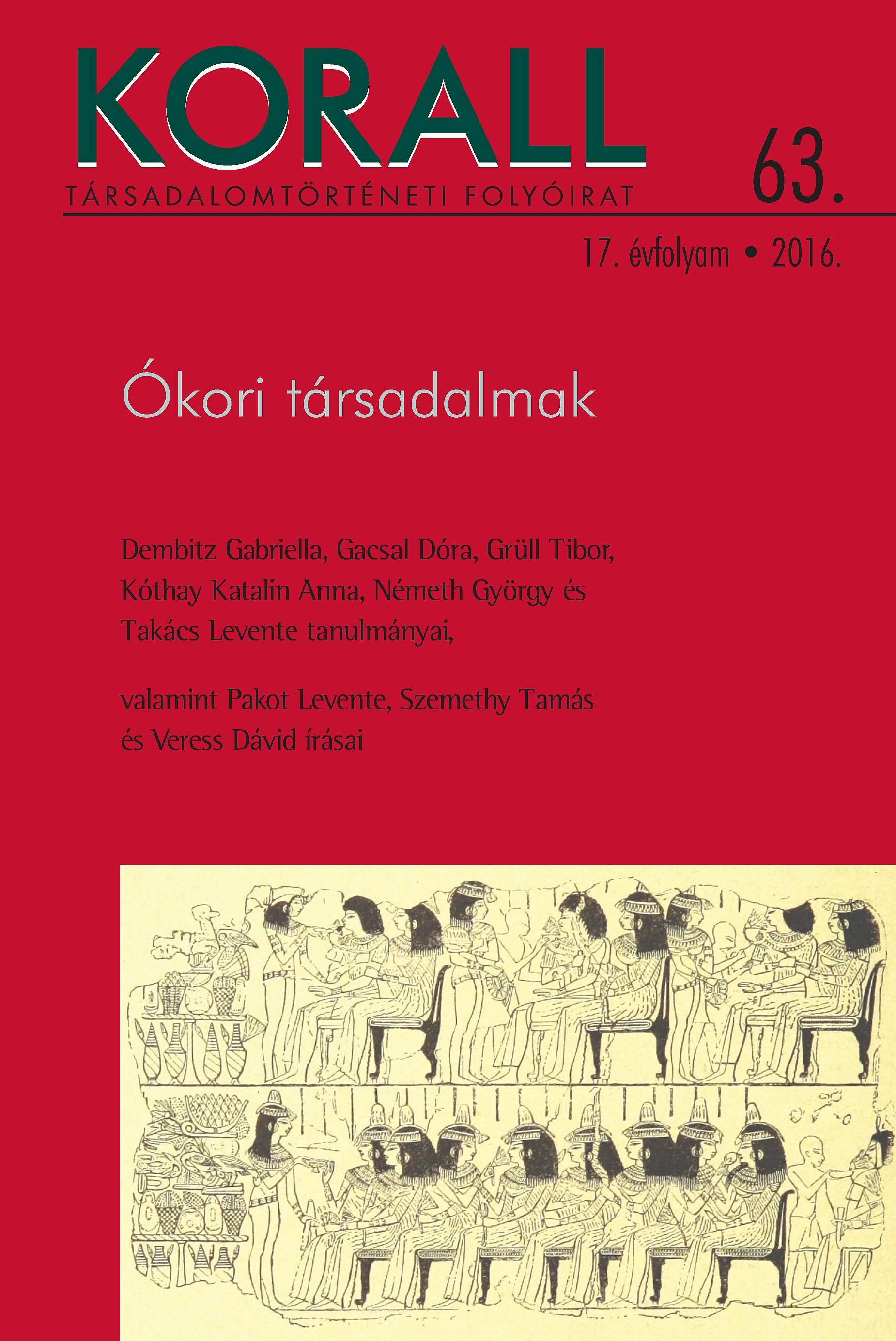A római rabszolgaság
Slavery in Rome
Author(s): Dóra Gacsal, Levente TakácsSubject(s): History, Cultural history, Social history, Ancient World
Published by: KORALL Társadalomtörténeti Egyesület
Keywords: history;roman empire;slavery;
Summary/Abstract: The percentage of slaves in the whole population of the Roman Empire was at least 10% according to modern estimates. This proportion might have been higher in certain areas and in certain periods. Interaction with slaves was an everyday experience for the Romans. Slaves, although de jure they counted as chattels, constituted a heterogeneous group within society. Their ranks included miners, potters, bankers, managers, agricultural workers and so on. The slave workforce was exploited to varying degrees to for the biggest possible yield, but the way they were treated was far from identical. Slaves were not simply passive objects of society, but active participants. The brutal murder of Larcius Macedo and the Spartacus-revolt were reactions given to extreme ill-treatment. The fact that slaves did not have a distinctive characteristic, e.g. skin colour, was a special feature of the Roman slave system. Theoretically every person could become a slave. At the same time, manumission was a common occurrence, thus any slave could become free. Their legal status, competence and skills as well as their personal interactions with their masters made the world of Roman slaves’ dynamic and colourful.
Journal: Korall - Társadalomtörténeti folyóirat
- Issue Year: 2016
- Issue No: 63
- Page Range: 54-68
- Page Count: 15
- Language: Hungarian

